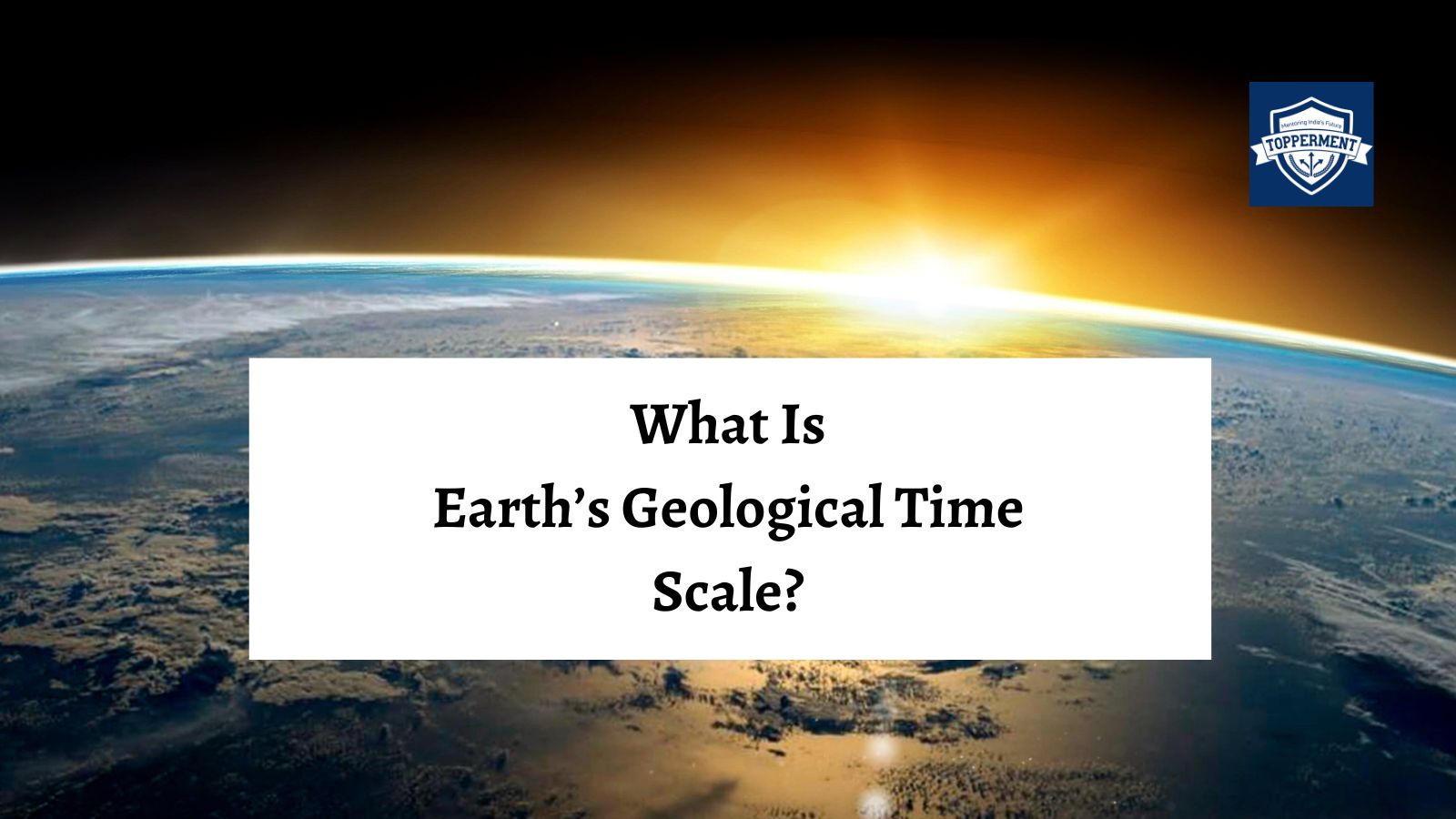
Earth’s Geological Time Scale : A Timeline of Earth’s History | UPSC Geography
The Geological Time Scale is a term of chronological measurement which helps to understand the relationships and the timing of the events that have occurred throughout the Earth’s history. Today we will get into detail about Earth’s Geological Time Scale.
Many scientists have developed a particular geological time scale of the earth by studying the rock layers and fossils across the world. The process of Radioactive dating helped scientists to understand the time divisions.
Earth’s Geological Time Scale Divisions:
Earth’s Geological Time Scale is divided into Eons which are Hadean, Archean, Proterozoic, and Phanerozoic. The eons are divided into eras, and the eras are divided into periods.
1. Hadean Eon– In this geological time scale, there was no oxygen on earth. The temperatures on the planet were extremely hot. A large number of asteroids have collided with the terrestrial planets in the solar system which includes Mercury, Earth, Venus, and Mars. Even though the temperature of the earth was recorded to be around 230degress, the liquid water oceans existed because the atmospheric pressure was above 27 atmospheres and helping the water to remain in a liquid state.
2. Archean Eon– In this earth’s geological time scale, Life started forming on earth and it was limited to single-celled organisms like nuclei. Even in this period, there was no oxygen. As the temperature cooled down, the earth’s crust formed the continents. But the ocean water was more acidic because of dissolved carbon dioxide.
3. Proterozoic Eon– This is the period when oxygen entered into Earth’s atmosphere. Bacteria started producing oxygen that lead to the formation of life. Earlier forms of fungi were formed around this time. The first symbiotic relationships between the mitochondria and chloroplasts formed and the hosts kept on multiplying.
4. Phanerozoic Eon– In this period, the living beings remained microscopic. Only plant life appeared on the land. Later on, Pangea formed and divided into Laurasia and Gondwana which resulted in life formation on land like insects, animals, and fungi began to appear. Birds, dinosaurs, and more recent mammals emerged. Other various modern animals which also include human beings evolved in this period.
Earth’s Geological Time Scale Evolution
About a 65million years ago, the climate became warm and mild. Marine animals like whales and dolphins evolved. Grasses increased and became a food source for the grazing animals. The Himalayas in India, the Alps in Europe, and the Rocky Mountains in the USA formed. With the growth of these mountains, the climate cooled down. As the climate changed, human beings and animals learned to adapt to the rise and fall of the oceans caused by the melting of glaciers.
Geological Time Scale helps us to understand the earth’s history and how human beings and animals along with other organisms adapted themselves to the earth’s different climatic changes.
Also Read
- How DPSPs Are Driving Economic and Social Development in India? | UPSC Polity
- The Process of Law Making in India: From Idea to Act | UPSC Polity
Follow Us For More Content On:
https://www.instagram.com/topperment/



